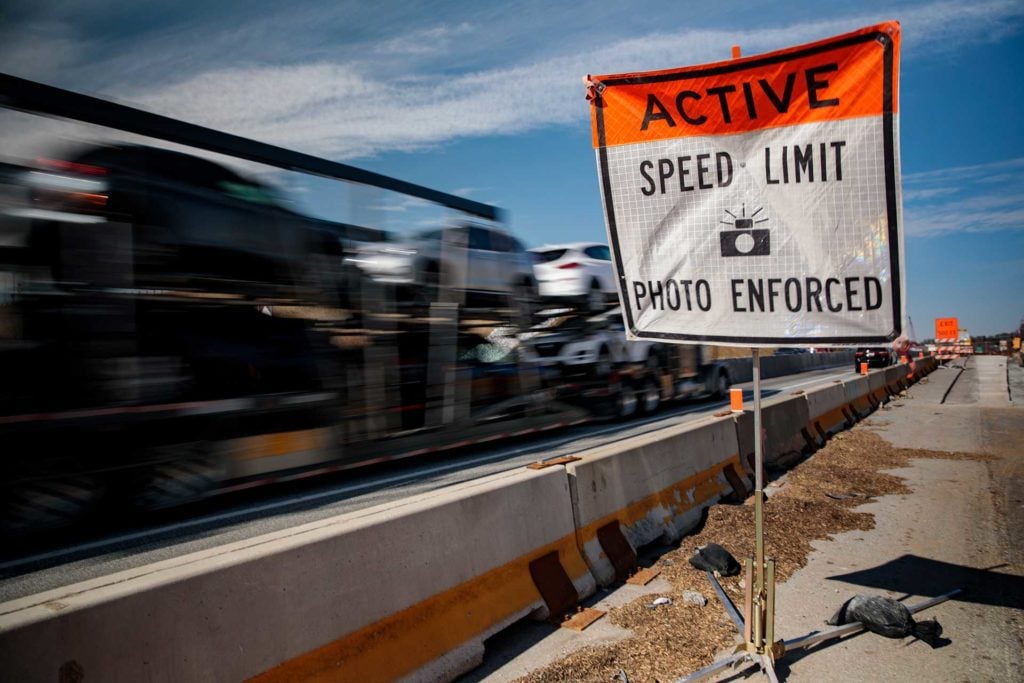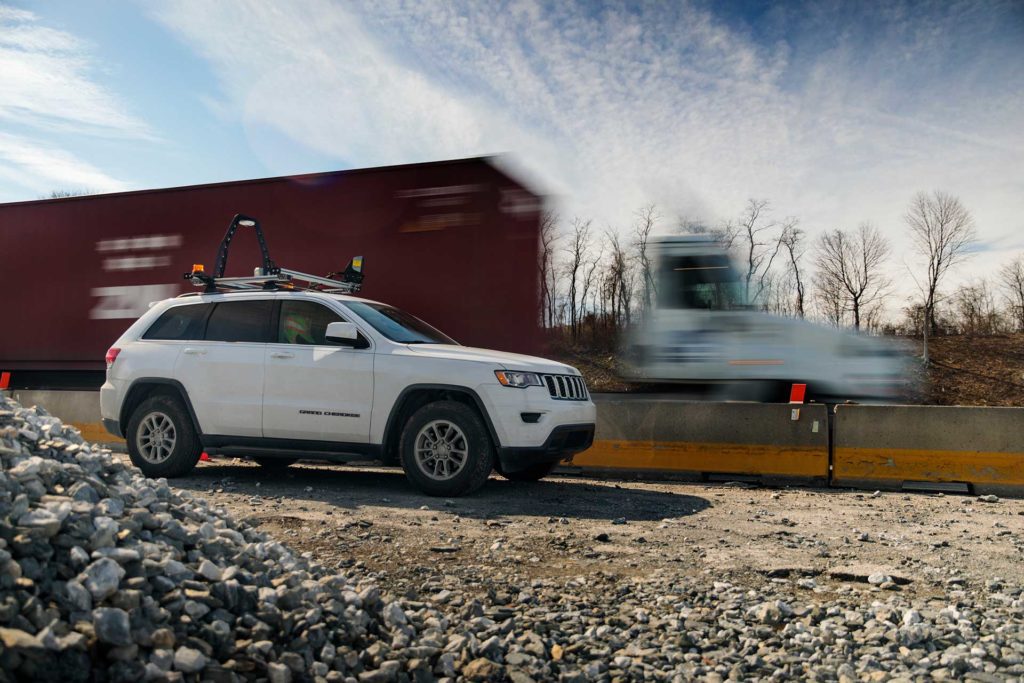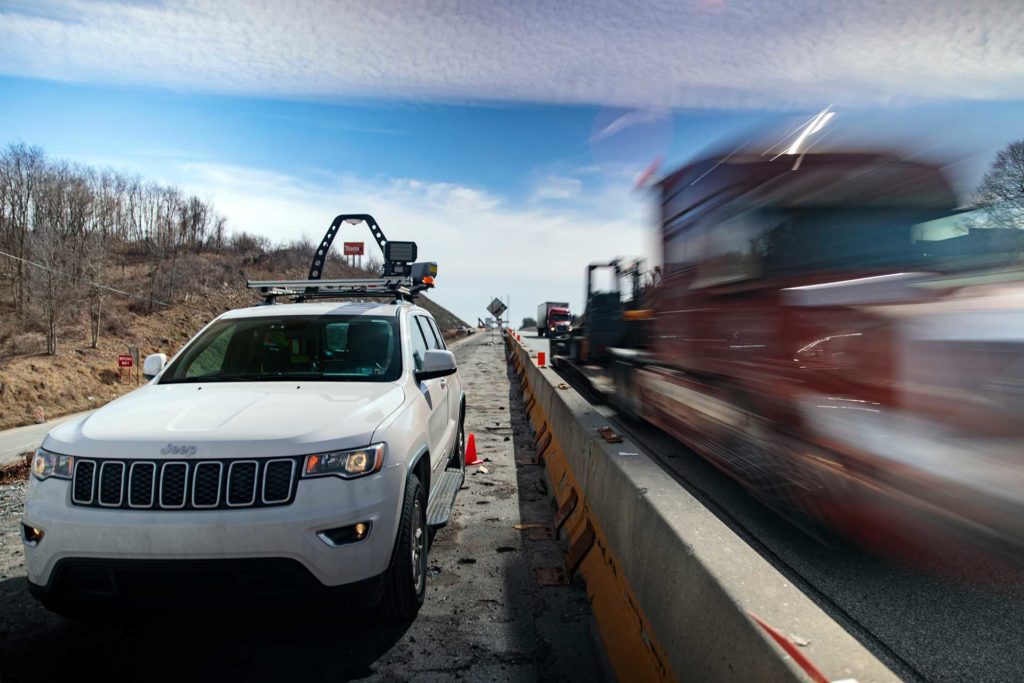Show Notes
Enabling Legislation and Program Background
On October 19, 2018, the Pennsylvania state legislature passed Act 86 of 2018 enabling the use of Automated Speed Enforcement Systems in active work zones on highways receiving federal-aid throughout the state. The enabling legislation required that the Pennsylvania Department of Transportation (PennDOT) and the Pennsylvania Turnpike Commission (PTC) implement the program within 18 months. Pennsylvania State Police (PSP) also supports the operation of this program.
Pennsylvania’s Automated Work Zone Speed Enforcement (AWZSE) pilot program began in 2019 and will end in 2024. It involves deploying a mobile unit to an active work zone to detect the speed of each passing vehicle. If a vehicle is detected to be traveling more than 11 miles per hour over the posted speed limit, the unit captures and records two images of the front and two images of the rear of the vehicle. For commercial vehicles, the unit captures the two front images to identify the plates.
The legislation requires that for enforcement to occur, workers must be present within the work zone. Two advance warning signs are required, with at least one of these warning signs indicating whether enforcement is active or inactive. A notice is required at both the active work zone and on the program website for the location where enforcement is occurring. Finally, an “end road work” or “end active work zone” sign must be present at the end of the work zone.
Program Administrator Team
PennDOT and the PTC selected an RK&K-led team to develop, execute and maintain this pilot program. RK&K had previously assisted Maryland with the development and implementation of their AWZSE program, bringing proven knowledge and lessons learned from building this type of program from the ground up. Other team members include Gannett Fleming, HNTB, Arora and Associates, Drive Engineering, and the Texas A&M Transportation Institute. The team’s key personnel bring experience gained from statewide programs in Illinois and Maryland, the only other states with active AWZSE programs in the United States.
RK&K’s knowledge and experience of building this type of program from the ground up was instrumental in being selected for the Program Administrator role for Pennsylvania’s program.
Program Administrator Team Roles and Responsibilities
Program Development
To ensure all of the state agencies involved with the program agreed on program operation, RK&K led the development of an Interagency Agreement between PennDOT, PTC, and PSP. This Agreement formally established each agency’s responsibilities within the program and established an Executive Committee, consisting of three members from each agency. The Executive Committee provides feedback and direction to the program.
RK&K led the procurement process for a System Administrator for the program. The System Administrator is responsible for the field deployments including speed detection and image capture, violation tracking and processing, violation payment services, and all associated back-office processes. This program was the first time that PennDOT and PTC solicited a joint procurement. Qualified respondents were invited to demonstrate their systems along a limited access highway, typical of the anticipated application of the system. The System Administrator was formally selected at a May 2019 PTC Commissioners Meeting, and contract execution occurred in October 2019.
RK&K led the development of the RFP for the System Administrator. This program was the first time that PennDOT and PTC solicited a joint procurement.
RK&K also assisted with the design for the advance warning signs and developed the sign placement standards for each agency. The design of the advance warning signs was an iterative process requiring concurrence from both PennDOT and PTC and approval by the Federal Highway Administration (FHWA).
Program Execution
Enforcement activities for this pilot program began with test deployments in November 2019 and a 60-day “Pre-Enforcement Period” in January 2020. The testing and pre-enforcement periods allowed unforeseen issues to be discovered and resolved without negatively impacting the program. Full enforcement began in March 2020.
In order to give PennDOT and PTC personnel a baseline understanding of the program, including background and operation, the RK&K team prepared a presentation about the AWZSE program. The RK&K team, along with lead agency representatives from PennDOT and PTC, presented these sessions.
The RK&K team prepared a presentation to introduce and familiarize PennDOT and PTC personnel across the state with the AWZSE program.
On a monthly basis, the RK&K team reviews project letting schedules and initiates contact with PennDOT and PTC Districts to identify construction projects and maintenance activities that would be suitable for receiving AWZSE deployments. The team holds project coordination calls with individual project contacts to discuss the program and specific details. Once working days and hours are established, the RK&K team can schedule deployments to those projects when active work is occurring.
Each week, the team prepares detailed schedules showing deployment locations and enforcement timeframes. These schedules are developed in coordination with the System Administrator and are shared with agency leadership, regional staff, and project-specific contacts.
Program Maintenance
RK&K is responsible for the long-term health and viability of the program. If the program is successful throughout the pilot period, the legislation could potentially be modified to allow this program to operate indefinitely.
One key program maintenance task is quality control. The RK&K team performs field quality control checks and routinely monitors the back-office violation tracking database to ensure that all deployments are being set up as required, that all processes and reviews are occurring as required, and that mailings are being sent out.
The RK&K team performs field quality control checks to ensure that deployments are set up in accordance with the appropriate standards.
Another key maintenance task is program reporting, including analysis of data provided by the System Administrator. Data analysis includes investigating speed trends, violation trends, and trends by location. The results of these analyses are shared with the agencies and can be used to improve the effectiveness of the program by providing enforcement at locations with known speeding issues.



